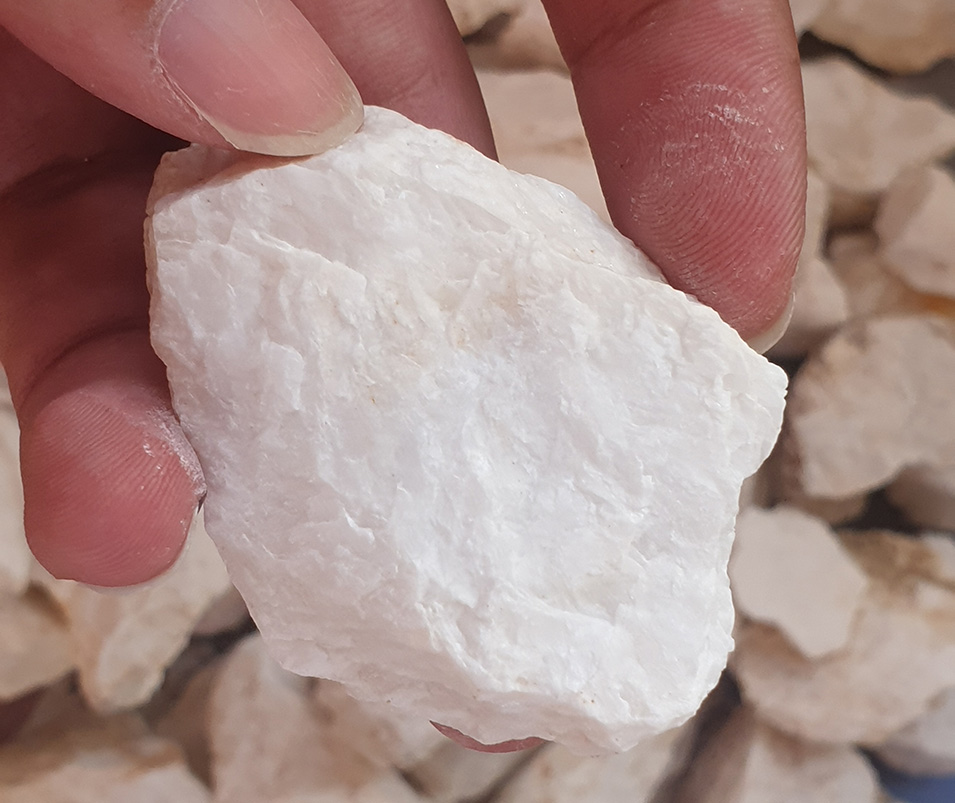BARITE
The barium sulfate barite takes its name from the Greek word barys, which means “heavy” a reference to its high specific gravity. It has also been called heavy spar. Barite crystals are sometimes tinged yellow, blue, or brown. Golden barite comes from South Dakota. Crystals are well formed, usually either prismatic or tabular. Cockscomb (crested aggregates) and desert roses (rosette aggregates) of crystals are common. Transparent, blue barite crystals may resemble aquamarine but are distinguished by their softness, heaviness, and crystal shape. Barite can also be stalactitic, stalagmitic, fibrous, concretionary, or massive. Barite is a common accessory mineral in lead and zinc veins. It is also found in sedimentary rocks, clay deposits, marine deposits, and cavities in igneous rocks.
Name: From the Greek for weight, in allusion to the high specific gravity.
Polymorphism & Series: Forms a series with celestine.
Mineral Group: Barite group.
Associaton: Fluorite, calcite, dolomite, rhodochrosite, gypsum, sphalerite, galena, stibnite.
Chemical Properties of Barite
| Chemical Classification | Sulfate mineral, barite group |
| Chemical Composition | BaSO4 |
Physical Properties of Barite
| Color | Colorless, white, light shades of blue, yellow, grey, brown |
| Streak | White |
| Luster | Vitreous, Pearly |
| Cleavage | Perfect cleavage parallel to base and prism faces |
| Diaphaneity | Transparent to opaque |
| Mohs Hardness | 3-3.5 |
| Specific Gravity | 4.3–5 |
| Diagnostic Properties | white color, high specific gravity, characteristic cleavage and crystals |
| Crystal System | Orthorhombic |
| Tenacity | Brittle |
| Fracture | Irregular/Uneven |
| Density | 4.50 g/cm3 (Measured) 4.50 g/cm3 (Calculated) |
Optical Properties of Barite
 Barite Mineral PPL and XPL
Barite Mineral PPL and XPL
| Type | Anisotropic |
| Color / Pleochroism | Visible |
| Optic Sign | Biaxial (+) |
| Birefringence | δ = 0.012 |
| Relief | Moderate |
Occurrence
A gangue mineral in low-temperature hydrothermal veins; in residual deposits from weathered barite-bearing limestones; an accessory mineral in igneous rocks; in carbonatites; a primary component of submarine volcanogenic massive sulfide deposits and sea-floor chimneys.
Uses Area
Barite is the main ore of the element barium. It is also important in the manufacture of paper and rubber. Barite is also used in radiology for x-rays of the digestive system. When crushed, it is added to mud to form barium mud, which is poured into oil wells during drilling. A rich, white pigment was once made from crushed Barite.
Barite is also a very popular and common mineral among collectors.







